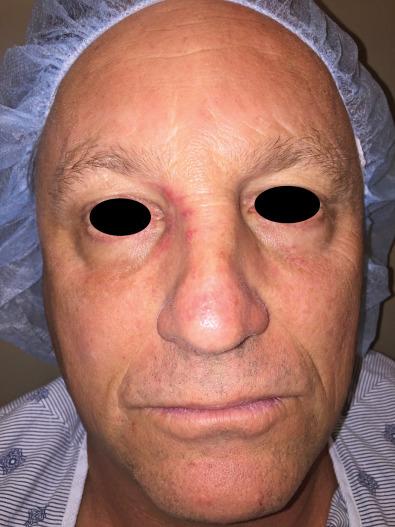Physical Address
304 North Cardinal St.
Dorchester Center, MA 02124
Nasal bone fractures are the most common type of facial bone fracture, accounting for at least half of all adult facial fractures. The annual incidence of nasal bone fracture ranges from 0.053% to 0.37%, with peak incidence in adolescence or early adulthood. Most nasal fractures are due to accidents (41%), with assault (31%) and sports (29%) also prominent etiologies. Nasal bone fractures are frequently associated with cartilaginous and soft tissue injuries. Fractures of nearby facial bones may also occur, with orbital blowout and zygomaticomaxillary complex (ZMC) fractures being most common.
The nasal bones are paired, and attach to the nasal process of the frontal bone superiorly, frontal process of the maxilla laterally, upper lateral cartilages inferiorly, contralateral nasal bone medially, and septum internally. The septum is made up of the quadrangular cartilage anteriorly, perpendicular plate of the ethmoid superiorly, the vomer posteroinferiorly, and the crest of the maxillary and palatine bones inferiorly.
The blood supply of the external nose is robust and receives contributions from the internal carotid artery via the dorsal nasal branch of the ophthalmic artery and the external carotid artery via the lateral nasal and septal branches of the facial artery.
Sensation of the nasal dorsum is derived from the ophthalmic branch of the trigeminal nerve, while the nasal sidewalls are innervated by the maxillary branch of the trigeminal nerve.
Upon encountering a patient with nasal trauma, it is important to first establish the timing and mechanism of injury. The history is likely to provide clues to the pattern and severity of the fractures. A lateral blow to the nose, such as from an assault or being elbowed during a sports game, tends to result in lateral displacement of the nasal pyramid. On the other hand, a frontal blow, such as from a fall or from steering wheel impact in a motor vehicle crash, is more likely to result in frontal depression of the nasal bones with potential impaction of the nasal bones and nasal septum.
It is important to inquire about associated symptoms such as nasal airway obstruction, change in external appearance of nose, and epistaxis. Trauma resulting from a high force of impact or the presence of unusual symptoms including clear rhinorrhea, vision changes, diplopia, facial numbness, trismus, and/or change in occlusion should prompt investigation for other concomitant fractures. It is also important to establish any prior history of nasal trauma or nasal surgery as these patients are more likely to require secondary reconstruction after initial management of their fracture.
The goal of the physical examination is to determine the extent and severity of the injury in order to counsel the patient appropriately regarding optimal management and outcome expectations. Examination should begin with a visual inspection for nasal deformity or deviation and noting any soft tissue injuries. Photo documentation of the external appearance of the nose is important for preoperative and postoperative counseling of the patient ( Fig. 1.10.1 ). It is often helpful to compare the external appearance to a photograph from prior to the injury.

Gentle palpation of the nasal dorsum should be performed in order to evaluate for the extent of displacement, depression, or lateralization of the nasal bones. The keystone region, the junction between the nasal bones and upper lateral cartilages, should also be palpated as trauma may result in disruption of this critical support region, leading to middle vault collapse. The nasal tip should be palpated to assess for potential loss of septal support.
An internal nasal examination with anterior rhinoscopy and nasal endoscopy should be performed to evaluate for septal fracture, septal hematoma, epistaxis, and clear rhinorrhea. A septal hematoma, if identified, must be drained as quickly as possible to avoid septal cartilage loss. Severe epistaxis may require additional management such as nasal packing. The presence of clear rhinorrhea necessitates further evaluation for a cerebrospinal fluid leak, such as with a beta-2 transferrin assay and high-resolution facial computed tomography (CT) scan to assess for a skull base fracture.
A complete physical examination must include investigation for physical signs of other facial bone fractures. A thorough examination of the head and neck should include palpation of the entire facial skeleton, assessment of extraocular motility, visual acuity, facial movements and sensation, and thorough evaluation for dental injury or pain, trismus, and malocclusion. The presence of any of these associated injuries should prompt further investigation with imaging.
Become a Clinical Tree membership for Full access and enjoy Unlimited articles
If you are a member. Log in here